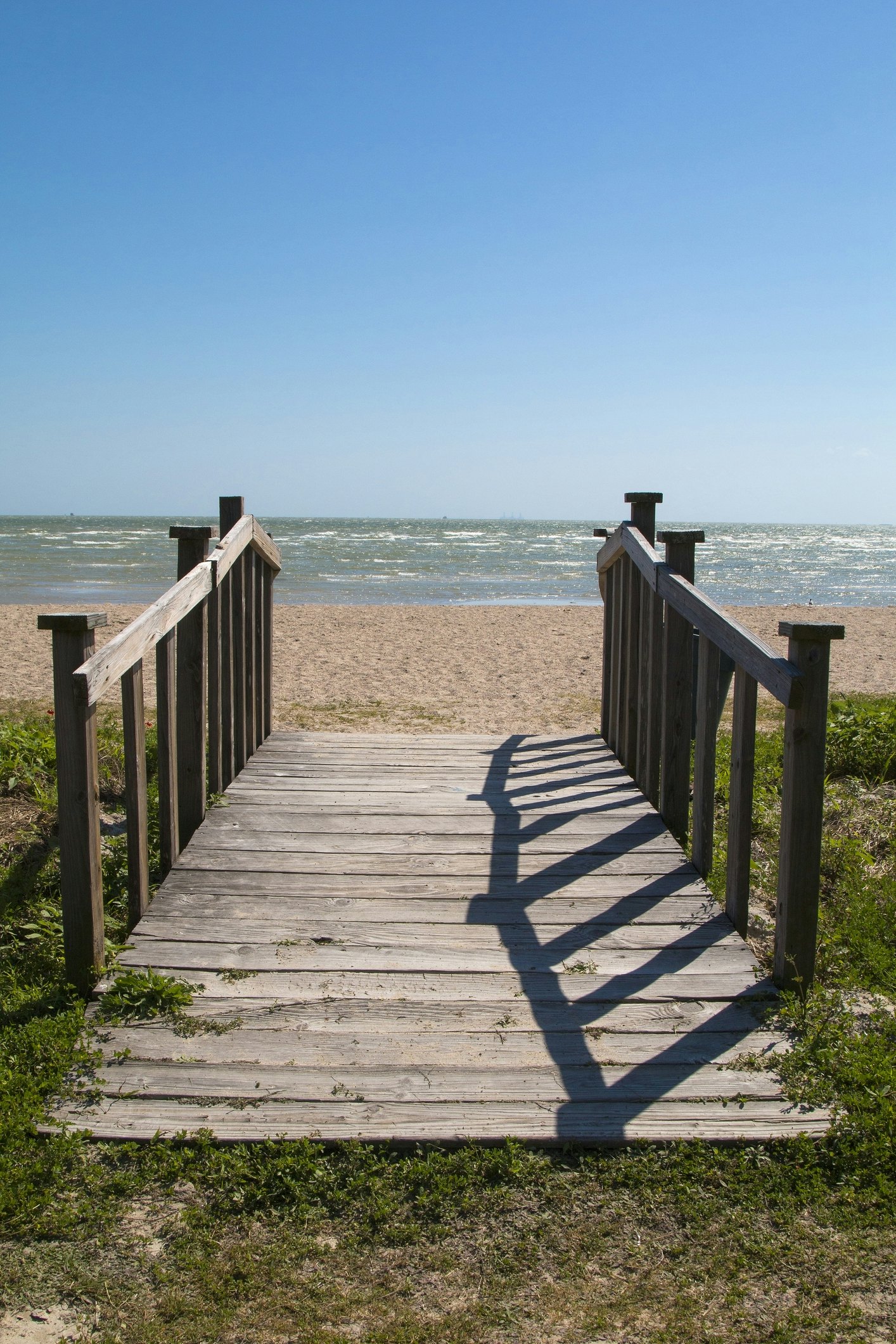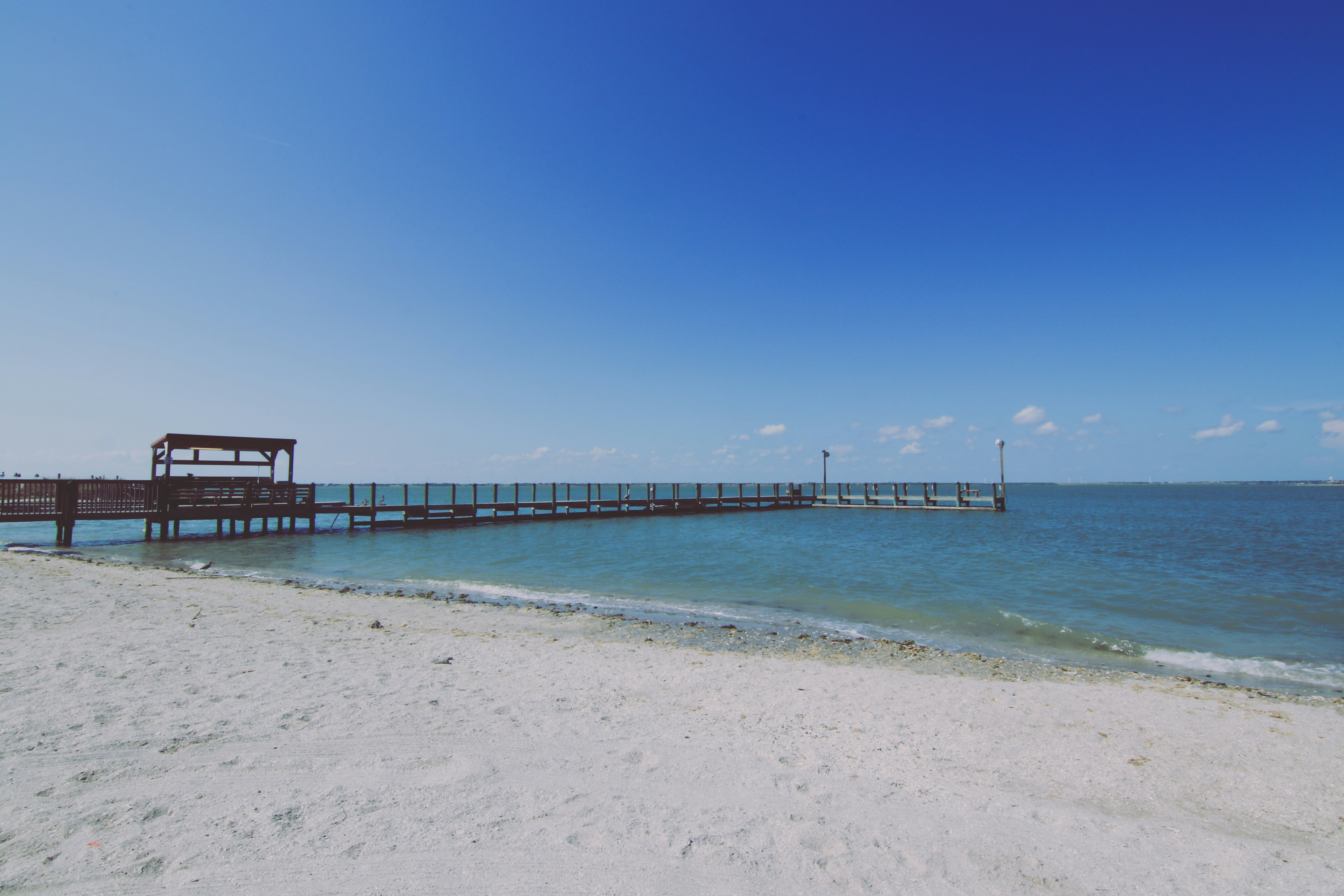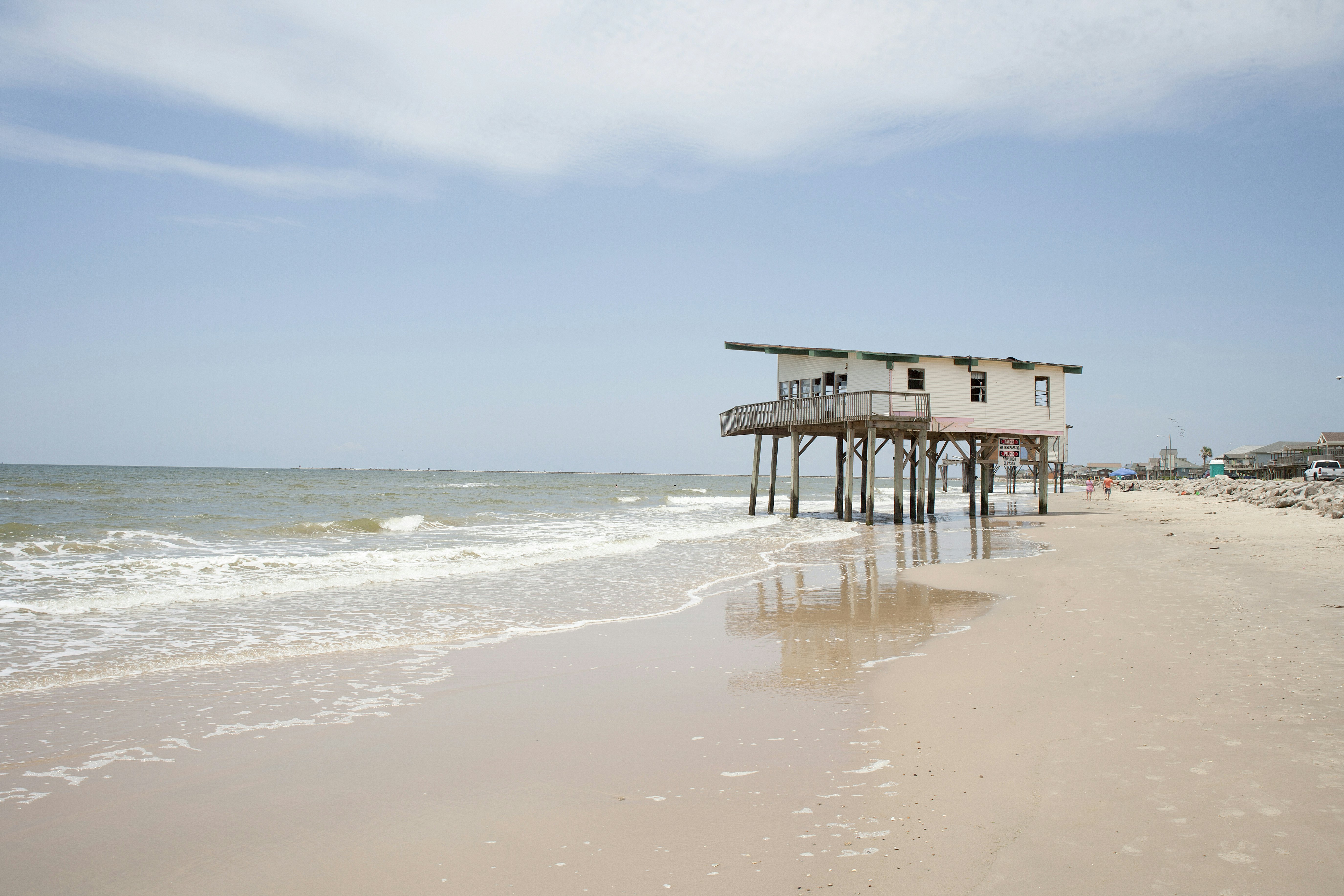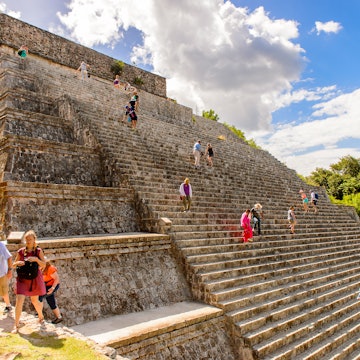

The boardwalk leading to East Beach near Galveston. Mark Taylor Cunningham/Shutterstock
Research is key when you're planning a day at the beach in Texas. The coastline of the Lone Star State can be murky and the closest stretch of sand isn't necessarily the best available option. Timing is also important – the weather is best from late spring to early fall for coastal adventures.
But the sheer length of that coastline (over 600 miles!) means there are sandy treasures to be found and wonderful communities coming together on the shore. You see, Texas is all about the people, and these beaches are the beloved hosts of big family barbecues, students playing sports and spectacular fireworks.
The wildlife is also a huge draw – close proximity to Mexico and a share of the border with Louisiana means that flora and fauna normally associated with the tropics are in abundance along many points. And for those seeking a touch of secluded romance, there are plenty of quiet and private spots without another soul enjoying the beautiful sunset.
Couples, families, friends and solo travelers, come and enjoy the Texas shoreline – here are the best beaches to dip your toes in, along with essential planning tips.
1. East Beach, Galveston
Best beach for a party vibe
Everyone in Texas knows Galveston is the place for gatherings. That basically means it's where the party’s at. East Beach holds this sprightly status because it is the only one where alcohol is permitted. Frequent live music events and an annual sandcastle-building competition happen here alongside the drinking and barbecuing.
Planning tip: Glass is prohibited on the beach. Bring a cooler (you will definitely need a cooler) with reusable plastic cups or tumblers for the party.

2. Sea Rim State Park
Best beach for wildlife
Against the frontier with Louisiana, Sea Rim State Park is a 4000-acre wetland with a 5.2-mile bend of sandy beach tacked on. This is one for the wildlife watchers, who will love the rich birdlife, ghost crabs, river otters and alligators. The Gambusia Nature Trail boardwalk is especially good for sightings.
Kayakers will relish the network of waterways back from the shore for paddling. Basic camping is available for a fee, attracting those who want to enjoy the broad, uncrowded sweep of butterscotch sands for a little longer.
Planning tip: Mosquitoes are rife all year round, so lather on the bug spray before you get here.

3. Crystal Beach on the Bolivar Peninsula
Best beach for peace and quiet
The Bolivar Peninsula, a 27-mile-long hook of land outlined in sand, shields Galveston Bay from the Gulf of Mexico. A seven-mile stretch of sand within it, called Crystal Beach, forms an especially fetching focal point. It is an un-manicured and wild-feeling buff-colored sandy expanse backed by a thin crest of dunes, where hermit crabs and migratory bird species outnumber beach-goers. This calm oasis feels a world away from nearby bustling Galveston.
Planning tip: The peninsula is only connected to the big port by ferry and land access is via a 35-mile-long road from Winnie.
4. San José Island
Best beach for wild fishing
Mustang Island lies between Corpus Christi Bay and the open ocean, and from Port Aransas at the northern corner, you can take a spin by ferry across the ship channel to another of the state’s peaceful sand-rimmed barrier islands. Only two miles wide at its broadest point, San José Island extends to 21 miles in length and, with the next island up being the still wilder Matagorda Island, becomes less busy the further north you explore. It receives a smattering of visitors, most of whom are here for beach-combing or for some of Texas’ finest fishing.
Planning tip: You’ll need to take everything with you for a day on the island as there are no stores on San José. Bring your own trash bag too and don’t leave anything behind.

5. Padre Island National Seashore
Best for white sand beaches
The Padre Island National Seashore is the world’s largest undeveloped barrier island. Not to be confused with the contrasting South Padre Island, a big and boisterous spring break destination, this is a gangly teased-out piece of road-less, car-less, unpeopled paradise along which 65 miles of incredibly pretty, white sand and shell beaches await you.
Grassy dunes, tidal flats and one of only six hypersaline lagoons on Earth (Laguna Madre) complete a vigorously protected ecosystem frequented by the best of the Texas coast’s fauna, including 360 bird species, coyotes and sea turtles such as the critically endangered Kemp’s ridley.
Planning tip: Access to the seashore is from Corpus Christi via Hwy 358 and John F. Kennedy Memorial Causeway, at the northern end. You can camp with a permit in five designated areas.

6. Rockport Beach
Best family-friendly beach
One of the cleanest sandy coastlines in the state, Rockport was the first scoop of sand in Texas to achieve Blue Wave Beach designation (the USA equivalent of Blue Flag Beach status), and the immaculate yellow crescent of the bay and gently shelving shallow water make it the best beach in Texas for families with small kids. The facilities, from shady picnic areas to playgrounds, make for the perfect family-friendly beach.
Planning tip: As much as fur babies are considered part of the family for many, this beach does not allow dogs or other pets, so find a sitter before the (human) clan heads down.

7. Boca Chica Beach
Best beach for views of Mexico
Welcome to the very end of the road. Boca Chica Beach is an away-from-it-all slice of sand and dunes brushing the Rio Grande River mouth. Surreally, the SpaceX Launch Facility, a rocket production and testing site, is located nearby and locals are concerned about its continued encroachment upon their beloved beach. Apart from border city Brownsville from where the 23-mile road out here begins, this is the most southerly point in Texas and pretty undeveloped.
Planning tip: Texas is massive, so if you’re driving all the way to Boca Chica, chances are you’re going to pay Mexico a visit. Either way, checkpoints are dotted throughout the border, so bring your passport in case you stumble upon one.
8. Matagorda Island
Best beach for getting away from it all
Matagorda Island is the destination of choice for those who want a break from absolutely everything. It is deservedly fabled amongst fanatics of the great outdoors: you must charter your own boat in Port O’Connor to get here and take camping equipment if you wish to stay over. This is a pristine, unspoiled seaside paradise, flanked by the least crowded beaches in Texas.
The wildlife billing includes bald eagles, whooping cranes, alligators, coyotes and white-tailed deer, and without the presence of other humans, you will likely see much more of these creatures than elsewhere. Get information, including permits for camping, at the park office in Bay City.
Planning tip: There is no electricity or drinking water on the island. Charge up those devices and bring plenty of water in your reusable containers.

9. South Padre Island
Best beach for clear water
Known for its vibrant nightlife and bustling atmosphere, South Padre Island is a favorite for many Texans. The island offers a wide range of activities, from water sports to dolphin watching tours. The sandy beaches and warm waters make it an ideal spot for a fun-filled getaway.
Planning tip: Book your accommodation in advance, especially during peak seasons like spring break, as the island gets quite crowded.

10. Mustang Island
Best beach for camping
Located near Corpus Christi, Mustang Island is a serene escape with its sandy shores and rolling dunes. The Mustang Island State Park offers ample opportunities for camping, fishing and birdwatching. It's a great spot for those looking to enjoy nature without the crowds.
Planning tip: Bring plenty of water and sunscreen, as shade can be sparse on the beach.
11. Stewart Beach, Galveston
Best beach for games and facilities
Stewart Beach is another popular destination in Galveston, particularly favored by families for its well-maintained facilities and lifeguard presence. The beach offers plenty of amenities, including restrooms, showers, and picnic areas. It's a great spot for volleyball, beach games and soaking up the sun.
Planning tip: Arrive early to secure a good parking spot and a prime spot on the beach, especially on weekends and holidays.

12. Surfside Beach
Best beach for swimming and surfing
Surfside Beach is a laid-back destination known for its family-friendly atmosphere and beautiful sunsets. The beach offers a wide expanse of sand perfect for beachcombing, picnicking and building sandcastles. The gentle waves make it ideal for swimming and boogie boarding.
Planning tip: Surfside Beach has several beachfront rental properties, making it convenient for extended stays. Be sure to check local regulations for beach driving permits if you plan to bring your vehicle onto the sand.
















